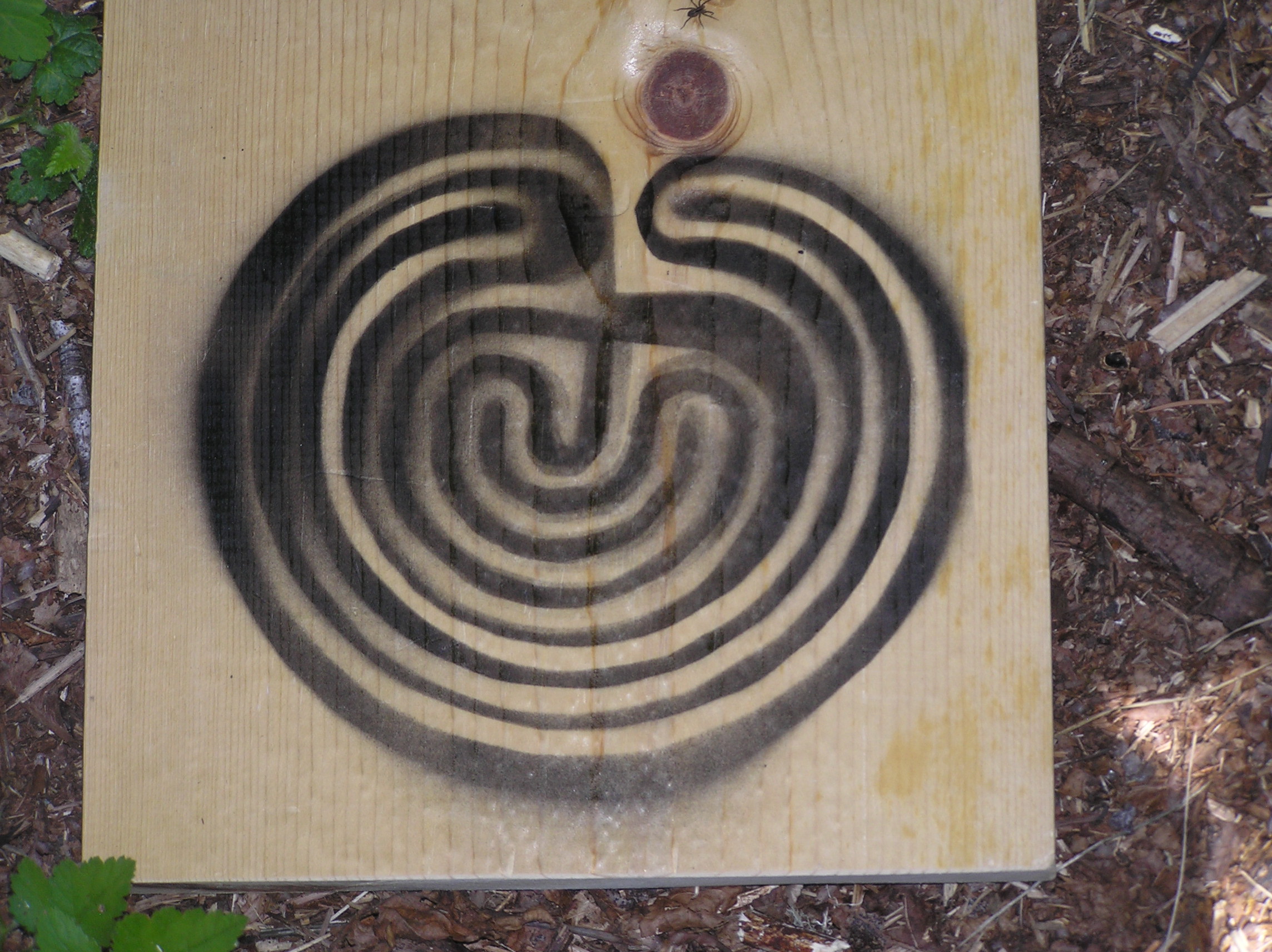Last year for my sixtieth birthday, someone gave me a finger labyrinth. I put it in my draw and promptly forgot about it. However, as I started to research various methods of prayer to incorporate in my new book Return to Our Senses: Reimagining How We Pray, I pulled it out again. To be honest this seemed a very strange way to pray especially when most of the articles I read suggested that the best way to trace out a finger labyrinth is with a finger from your non-dominant hand. Evidently, research suggests that our non-dominant hand has better access to our intuition.
Much to my surprise, when I experimented with my finger labyrinth, I found that it really did help me focus and often brought intuitive inspiration when I was grappling with challenging issues. This morning it inspired this prayer:
Walk with us Lord through all the twists and turns of life,
Walk with us when the clouds obscure the way,
when what seemed close is now so far away.
Walk with us Lord until we trust in you,
Lead us to the centre of your love.
Interestingly, some of the earliest labyrinths found in Christian churches are finger labyrinths, their circuits well worn over the centuries by the passage of innumerable fingers “walking” to the center and then out again.
In view of that you may like to try your own finger labyrinth experiment. Try this exercise from United Christ Church Ministries
Before you start any finger labyrinth “walk,” take time to breathe and relax. If you keep a journal, have it ready for recording any insights after your walk. Set an intention or question for the walk. Without an intention a finger labyrinth walk can become an exercise in hastily and mindlessly moving your finger along the circuits and wondering why at the end of the walk you even bothered. Say a prayer, if you like, for support, healing, and guidance.
Place a finger from your non-dominant hand at the entrance to the labyrinth. As you trace the circuit, stay open to whatever presents itself: feelings, sensations, memories, images, or just “knowings.” Pause at any time to breathe, be with a memory, work with an image, or simply relax into the labyrinth. At the center of the labyrinth, feel its connection to your own center. The center is a wonderful place to relax, pray, or sing. When you are ready, trace your way out, staying open to whatever comes up for you. When your walk is done, place both hands on the labyrinth and give thanks for whatever you learned and experienced.
Experiment and play with your labyrinth. Try using a favorite word or phrase that evokes the sacred for you. Repeat the mantra slowly in your heart as you “walk.” You may also walk with questions such as, “In what way do I most need to grow spiritually right now?” or “What most blocks me from fully receiving and living God’s love?” You can also walk the labyrinth in intercessory prayer for someone else, sending them the fruits of your walk.
If you are experiencing a difficult feeling-anger, grief, bitterness-have as your intention its healing and release (knowing, of course, that many deeper feelings may take more time than a walk).
If you are struggling with a problem, ask for insight and guidance: What must I release in order to allow healing? What am I not feeling or acknowledging that I must let into my conscious awareness to allow healing? Whom do I most need to forgive, and for what?
If you are working with an illness, either serious or insignificant, you may walk into the labyrinth simply asking to return to balance with yourself and life, no matter what the circumstances of your illness. You can also walk with the question: What part of my life (or me) am I neglecting that needs attention?
Illness may also be a teacher or an ally. If you are interested in exploring your illness as a teacher, you may walk asking, “How may I open to my illness as a teacher and ally?” or “What does my illness have to teach me at this point in my life?”

